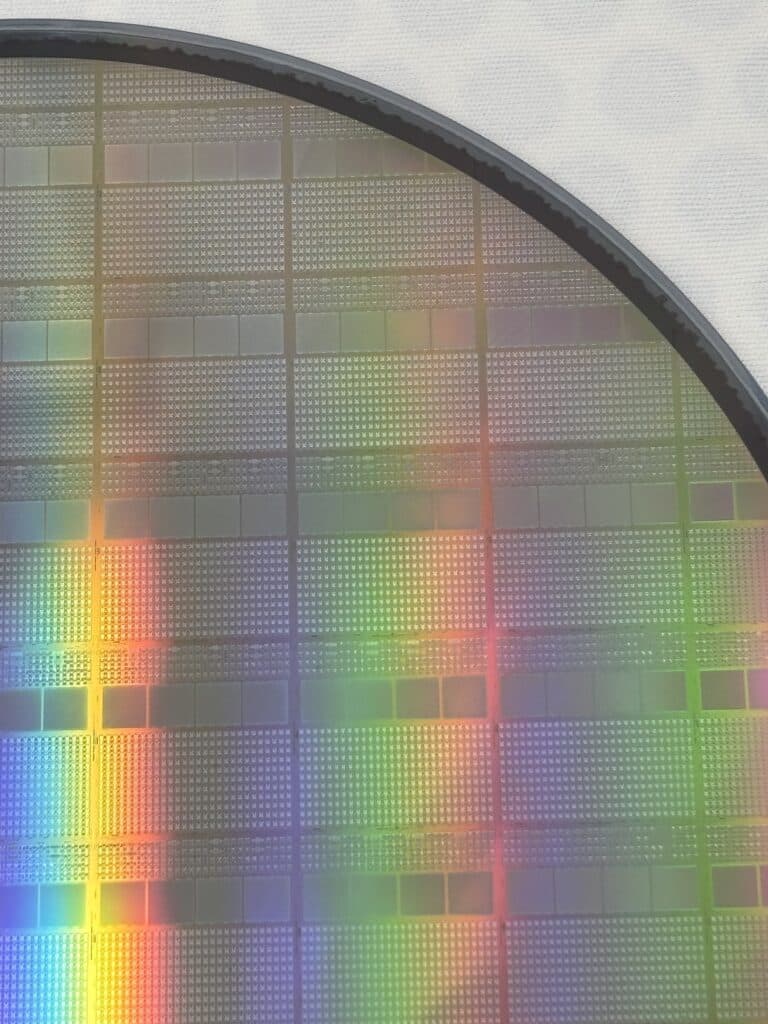The French company presents its new nanowire microLED chip format at Display Week 2025, designed for devices such as smartwatches, automobiles, and augmented reality.
The French tech company Aledia, a leader in silicon-based nanowire microLED displays, announced at Display Week 2025 its most significant advancement to date: FlexiNOVA, a fully customizable industrial microLED chip platform that promises to accelerate the mass adoption of this technology in sectors such as wearables, automotive, luxury TVs, and augmented reality displays.
This announcement represents a decisive step in moving microLEDs from the lab to large-scale production, a challenge that has so far hindered their commercialization due to high costs and manufacturing difficulties of chips smaller than 30 µm.
“FlexiNOVA offers display designers the freedom to innovate without compromise,” stated Pierre Laboisse, CEO of Aledia. “They can now adapt the size, shape, and power consumption of the chip without sacrificing performance, all within a scalable industrial environment.”
MicroLED for All: From Smartwatch to Car
The key to FlexiNOVA is its industrial versatility and energy efficiency. Unlike other solutions, its chips are manufactured on 200 mm gallium nitride on silicon wafers, which reduces costs and improves compatibility with standard CMOS processes. Additionally, the company has demonstrated its ability to scale production to 300 mm wafers, further facilitating integration into existing semiconductor fabs.
The chips developed by Aledia are ultra-small—ranging from 15×30 µm² to less than 3.5×3.5 µm²—allowing for the creation of ultra-high resolution displays, necessary in compact devices such as smartwatches, extended reality (XR) displays, and digital panels for vehicles.
One of its most innovative aspects is the ability to operate with multiple voltages (6V and 9V) on a single chip, which reduces current density and alleviates thermal stress on electronic components. This improves durability and allows for better integration with TFT backplanes in demanding environments, such as the automotive sector.
From Laboratory to Market
Aledia’s new pilot line in Grenoble, France is already producing industrial wafers with high uniformity and process control. This facility turns technological promise into a ready-to-scale industrial platform, which could mark the beginning of a new era for the display market.
“The arrival of FlexiNOVA represents a turning point in the commercialization of nanowire microLEDs,” explained Guillaume Chansin, Associate Director at Counterpoint Research. “Its flexible design and large wafer manufacturing address two of the main challenges: cost and adaptability.”
A Showcase at Display Week 2025
FlexiNOVA is the star attraction at Aledia’s booth (No. 433) at Display Week 2025, the most important international trade fair for the industry, taking place from May 13-15 in San Jose. In addition to its exhibition, the company is participating in several key conferences:
- Business Keynote: “Commercialization of MicroLEDs,” by Pierre Laboisse (May 14).
- Technical Session 33.4: “MicroLED Arrays on a Single Chip,” by Pierre Tchoulfian, CTO (May 14).
- Exhibitor Forum – F7: “Scalable 3D Nanowires for Future Displays,” by Felix Marchal, Commercial Director (May 14).
- XR Panel Discussion: alongside leaders from Vuzix, SeeYA, and Lumus (May 14).
In the 2024 edition, Aledia already won the People’s Choice Award for best microLED development of the event, a recognition that solidified its position as one of the most disruptive players in the industry.
The Race for MicroLED
MicroLEDs are considered by many to be the “holy grail” of future displays: they combine the brightness and durability of LEDs with the energy efficiency and thinness of OLED screens, but without the degradation issues. However, until now, they have been limited to prototypes or high-end products due to manufacturing difficulties.
With FlexiNOVA, Aledia aims to break that industrial barrier and offer a real solution for manufacturers looking to innovate with microLEDs without compromising scalability or costs.
The display industry is undergoing a major transition. With technologies like Aledia’s, the leap to microLED could shift from being a promise to becoming the new standard, paving the way for brighter, thinner, and more efficient devices.

